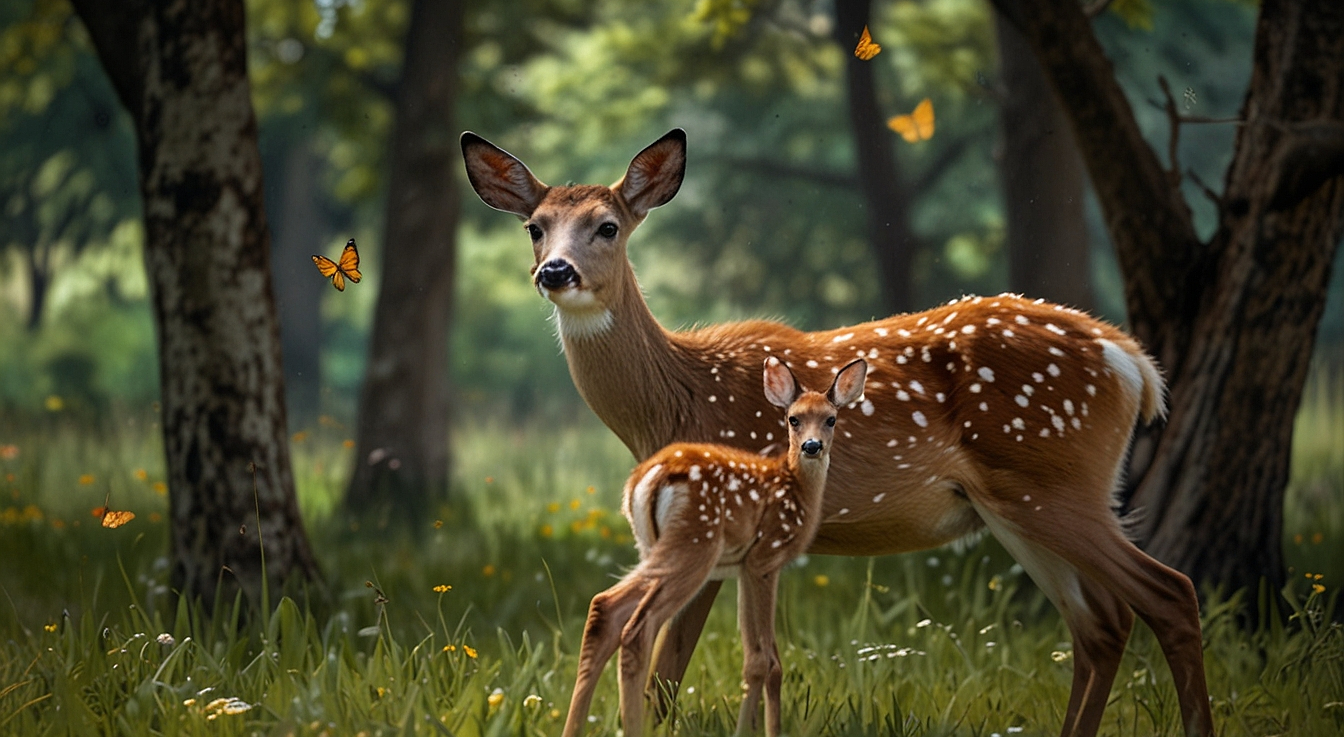
Deer Fawn Season in Western North Carolina
Do's and Don'ts According to NC Wildlife Services: As spring unfolds in Western North Carolina,
so does the season of new life for local wildlife. Among the most notable arrivals are deer fawns, often seen nestled in the underbrush or cautiously exploring their surroundings. While these young deer are a delightful sight, it's crucial for residents and visitors to understand the best practices for interacting with them. According to the North Carolina Wildlife Resources Commission (NCWRC), here’s what you should and shouldn’t do during deer fawn season.
What to Do:
Observe from a Distance: If you encounter a fawn, it’s best to admire it from afar. Fawns are often left alone by their mothers for long periods to avoid attracting predators. The mother is usually nearby, watching and waiting for a safe time to return.
Educate Yourself and Others: Share information about the habits and needs of fawns with friends and family. Understanding that a fawn alone is not necessarily abandoned can help prevent unnecessary intervention.
Call for Help if Necessary: If you find a fawn that appears injured, is in a dangerous location (such as near a busy road), or hasn’t moved for an extended period, contact the NCWRC or a local wildlife rehabilitator for advice. They can assess whether intervention is needed.
Keep Pets Away: Ensure your pets are kept on leashes and away from fawn habitats. Dogs can be perceived as predators, and their presence might stress the fawns or deter the mother from returning.
What Not to Do:
Do Not Touch or Move the Fawn: Handling a fawn can cause unnecessary stress and may lead to the mother abandoning it. Additionally, the scent left by humans can attract predators. Fawns are well-adapted to remain motionless and hidden until their mother returns.
Do Not Feed the Fawn: Feeding wildlife can lead to health problems and disrupt their natural foraging behaviors. Fawns rely on their mother’s milk, which is specially formulated to meet their nutritional needs.
Avoid Mowing Fields or Grasslands: If possible, delay mowing fields, grasslands, or areas with tall vegetation during fawn season. This can help prevent accidental injuries to hidden fawns. If mowing is necessary, walk the area first to ensure it’s clear of wildlife.
Do Not Assume the Fawn is Abandoned: It’s common for people to mistakenly think a fawn is abandoned because it’s alone. In most cases, the mother will return once she perceives there is no threat. Unless you are certain the mother has been injured or killed, it’s best to leave the fawn alone.
Understanding Fawn Behavior
Deer fawns are born with a natural instinct to remain still and hidden. Their spotted coats provide camouflage, making them less visible to predators. In the first few weeks of life, fawns will lie quietly while their mothers forage for food. This behavior is a critical survival mechanism and should be respected by humans.
The Role of NC Wildlife Services
The NCWRC plays a vital role in educating the public about wildlife and ensuring the well-being of animal populations across the state. They offer resources and assistance to help residents and visitors make informed decisions when encountering wildlife.
For more detailed guidance or specific concerns, residents can visit the NCWRC website or contact their local wildlife office. By following these guidelines, we can all contribute to the health and safety of Western North Carolina’s deer population during this important season.
Deer fawn season is a special time in Western North Carolina, offering a unique opportunity to witness the beauty of new life in the wild. By following the do's and don'ts outlined by the NCWRC, we can ensure that these young deer are given the best chance to thrive. Remember, the best way to help is often to observe and enjoy from a distance, allowing nature to take its course.
WNCTimes June 7, 2024
Image Credit: WNCTimes
Source: NCWRC


 How to resolve AdBlock issue?
How to resolve AdBlock issue? 